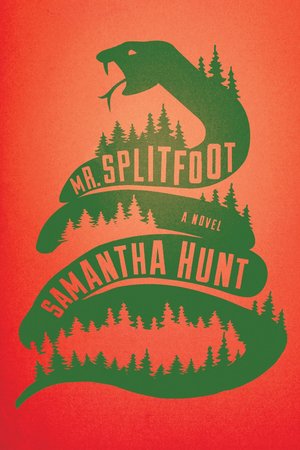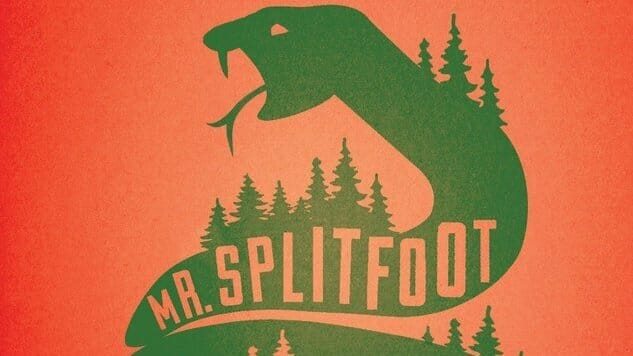Western New York’s Burned-over District, built and populated along the “psychic highway” of the Erie Canal, got its name from 19th-century evangelist Charles Finney, who deemed the district so exhaustively evangelized that it harbored no remaining souls to convert or religious fuel to burn. Historian Whitney Cross described district residents as “extraordinarily given to unusual religious beliefs, peculiarly devoted to crusades aimed at the perfection of mankind and the attainment of millennial happiness.”
Many of these movements coalesced around a single charismatic, prophetic or messianic figure, such as Joseph Smith, founder of the LDS church. According to legend, Smith was visited by an angel in Palmyra, New York in the late 1820s and directed to buried golden plates whose contents he later published as The Book of Mormon. Before he started talking to angels, Joseph Smith was better known for talking to ghosts, dabbling in séances and participating in other folk magic practices prevalent in the region.
 In May 1848, just east of Rochester in Hydesville, teenage sisters Kate and Margaretta Fox began a career as professional mediums when they claimed to have communicated—via “emphatic raps” on the floor of their family house—with a ghost later identified as Charles Rosna, a local peddler murdered five years earlier. Using a nickname for the devil popular among children in the area, Kate addressed Rosna’s ghost as “Mr. Splitfoot.”
In May 1848, just east of Rochester in Hydesville, teenage sisters Kate and Margaretta Fox began a career as professional mediums when they claimed to have communicated—via “emphatic raps” on the floor of their family house—with a ghost later identified as Charles Rosna, a local peddler murdered five years earlier. Using a nickname for the devil popular among children in the area, Kate addressed Rosna’s ghost as “Mr. Splitfoot.”
Samantha Hunt’s spooky and unnerving new novel, Mr. Splitfoot, concerns not the 19th-century Fox sisters but two 21st-century foster home siblings, Ruth and Nat. Together, they conduct séances for other resident orphans in which Nat summons “Mr. Splitfoot” to contact the children’s deceased parents.
Part gothic spine-chiller, part bleak, backwoods road novel, Mr. Splitfoot ranges all over the modern-day Burned-over District (although another Great Revival-era moniker, the “infected district,” seems better-suited to the region as Hunt describes it). In Hunt’s Western New York, it seems you can hardly swing a dead cat without hitting a religious cult leader or member, wielding influence that spreads like contagion.
We first encounter Ruth and Nat as teenagers within a year of aging out of The Love of Christ! Foster Home, Farm and Mission, which is run by the casually sadistic and quirkily Calvinistic Father Arthur and his drug-addled “part-time wife.” The foster kids housed in The Love of Christ! provide Father Arthur with a prairie-garbed labor supply, a state-funded profit center and an audience for his self-serving, disjointed, hell-and-brimstone proselytizing.
Hunt alternates between two narratives in Mr. Splitfoot. The first concerns Ruth and Nat’s waning foster-home years, in which the two are enticed into the freelance, for-profit séance business and brought within the reach of an even stranger and more sinister religious cult. In the second, roughly 15 years later, Ruth’s niece, Cora—who is single and pregnant—abandons a tedious office job to follow her emaciated and inexplicably mute aunt on a desultory road trip. Mostly on foot, with Ruth pointing the way, they venture deep into the bowels of Western New York and plumb the mystery of Ruth’s lost adult years and ravaged life.
Cora’s journey with Ruth is confounding, rich in backwoods weirdness, spooky and strange and artfully intertwined with the slowly unwinding story of Ruth and Nat’s earlier adventures. Cora captures the eerie connectedness of their journey and the haunted route they’re following when she finds herself in a discussion of “the perimeters of art” with a desk clerk at a roadside motel: “I like the idea that Ruth and I are walking artists, as if our tracks leave color behind. But if everybody in the world were a walking artist, the land would be so jammed with traces of everyone who came before. Haunted, polluted.”
Much of the time, Hunt’s Erie Canal corridor seems more redolent of Flannery O’Connor’s Christ-Haunted South, or cult compounds in Colorado City or Waco, than modern-day Western New York. And though there’s more than a little David Koresh or Rulon Jeffs in Father Arthur and the monstrous cult leader, who cobbles together a comically crackpot religion and doomed utopian community from snatches of The Book of Mormon, ’70s rock lyrics and Carl Sagan’s Cosmos, this chilling tale has much deeper roots in the Burned-over District than the Branch Davidians or Mormon Fundamentalism. Moreover, Mr. Splitfoot wouldn’t be half so interesting if it didn’t exhume the carnival of millenarianism and inter-realm interaction that swept the region two centuries ago, resurrecting it in a tale both strange and terrifying on the same scorched earth where evangelical fire once burned.

 In May 1848, just east of Rochester in Hydesville, teenage sisters Kate and Margaretta Fox began a career as professional mediums when they claimed to have communicated—via “emphatic raps” on the floor of their family house—with a ghost later identified as Charles Rosna, a local peddler murdered five years earlier. Using a nickname for the devil popular among children in the area, Kate addressed Rosna’s ghost as “Mr. Splitfoot.”
In May 1848, just east of Rochester in Hydesville, teenage sisters Kate and Margaretta Fox began a career as professional mediums when they claimed to have communicated—via “emphatic raps” on the floor of their family house—with a ghost later identified as Charles Rosna, a local peddler murdered five years earlier. Using a nickname for the devil popular among children in the area, Kate addressed Rosna’s ghost as “Mr. Splitfoot.”